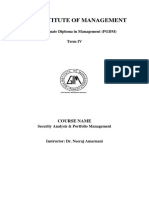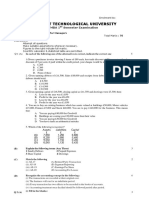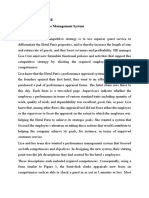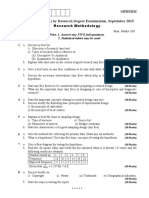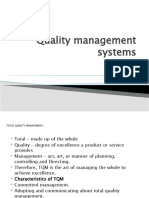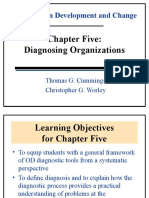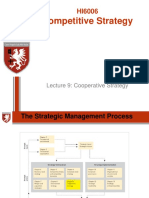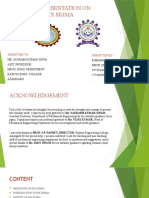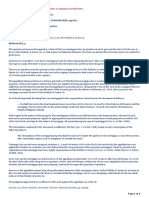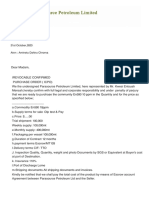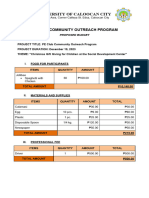Department of Accounting & Information Systems
Assignment on
Topic : Six Sigma
Submitted To: Abdul Alim Baser ACMA
Associate Professor
Department of Accounting and Information Systems
Faculty of Business Studies
University of Barishal
Submitted By: Habiba Zaman Mime
ID: 22 AIS 002
Course Title: Accounting for Strategic Cost Management
Course Code: AIS-5102
Year: MBA 1st year, 1st semester.
Date of Submission: 3rd December 2023.
1|Page
� Table of Contents
Six Sigma.........................................................................................................................................3
Introduction..................................................................................................................................3
Objective of Six Sigma................................................................................................................4
Key Principles of Six Sigma........................................................................................................4
Methodology of Six Sigma..........................................................................................................5
1. DMAIC..........................................................................................................................6
2. DMADV........................................................................................................................6
Importance of Six Sigma.............................................................................................................7
Six Sigma in Strategic Management............................................................................................8
Relationship between Lean Manufacturing and Six Sigma:........................................................9
Lean manufacturing.....................................................................................................................9
Similarities of Lean and Six Sigma...........................................................................................10
Lean Six Sigma..........................................................................................................................10
Conclusion:................................................................................................................................11
Reference:..................................................................................................................................12
2|Page
� Six Sigma
Introduction
Six Sigma is considered a philosophy that employs a well-structured continuous improvement
methodology to reduce process variability and drive out waste within the business processes
using statistical tools and techniques (Ban˜uelas and Antony, 2002).
The main focus of Six Sigma is to reduce potential variability from processes and products by
using either a continuous improvement methodology or a design/redesign approach known as
design for Six Sigma (DFSS). The former follows the phases: define, measure, analyse, improve
and control. This approach is known as DMAIC methodology and is employed in existing
processes/products. On the other hand, design for Six Sigma employs the IDOV (identify, design,
optimise and verify) methodology, during the design/redesign of processes or products (Antony
and Ban˜uelas, 2002).
Six Sigma is a disciplined and data-driven approach widely used in project management to
improve processes and minimize defects. It provides a systematic framework to identify and
eliminate variations impacting project performance.
The etymology is based on the Greek symbol "sigma" or "σ," a statistical term for measuring
process deviation from the process mean or target. "Six Sigma" comes from the bell curve used
in statistics, where one Sigma symbolizes a single standard deviation from the mean. If the
process has six Sigmas, three above and three below the mean, the defect rate is classified as
"extremely low." The goal of Six Sigma is to achieve a level of quality that is nearly perfect, with
only 3.4 defects per million opportunities.
Six Sigma was developed by Motorola in the 1980s, and it has since been adopted by many other
companies around the world, including General Electric, Toyota, and Amazon. It is used in
industries such as manufacturing, healthcare, finance, and service industries to improve customer
satisfaction, reduce costs, and increase profits.
3|Page
�Objective of Six Sigma
Six Sigma improvement projects work within the framework of a company’s existing processes
and seek to enhance them by continuous incremental improvements. Here, efforts are
continuously made to update the current standards and set up higher ones.
The aim is to do what the company already does but do it efficiently by reducing variability from
processes. When represented statistically, Six Sigma explains the way the process is performed.
When in a process, the maximum number of defects per million should not more than 3.4, then
only Six Sigma can be achieved.
These projects are developed from today’s perspective and constrained by assumptions made
during the development and design stages. Generally, improvement projects assume that (Nave,
2002):
The design of the product or service is essentially correct and the most economical.
Customer needs are satisfied with that design; and
The current product configuration satisfies the functional requirements of the market and
customer.
Key Principles of Six Sigma
The key sigma principles are the following:
1. Customer focus:
This is based on the popular belief that the "customer is the king." The primary goal is to bring
maximum benefit to the customer. For this, a business needs to understand its customers, their
needs, and what drives sales or loyalty. This requires establishing the standard of quality as
defined by what the customer or market demands.
2. Use data:
4|Page
�Gather data to discover the specific problem area that is to be addressed or transformed. Have
clearly defined goals for data collection, including defining the data to be collected, the reason
for the data gathering, insights expected, ensuring the accuracy of measurements, and
establishing a standardized data collection system.
3. Improve continuously:
Remove the activities in the process that do not add to the customer value. If the value stream
doesn't reveal where the problem lies, tools are used to help discover the outliers and problem
areas. Streamline functions to achieve quality control and efficiency. In the end, by taking out the
above-mentioned junk, bottlenecks in the process are removed.
4. Involve people:
Involve all stakeholders. Adopt a structured process where your team contributes and
collaborates with their varied expertise for problem-solving.
5. Be thorough:
The essence of Six Sigma is business transformation and change. When a faulty or inefficient
process is removed, it calls for a change in the work practice and employee approach. A robust
culture of flexibility and responsiveness to changes in procedures can ensure streamlined project
implementation.
Methodology of Six Sigma
The two main Six Sigma methodologies are
1. DMAIC
2. DMADV.
Each has its own set of recommended procedures to be implemented for business transformation.
5|Page
�1. DMAIC
This focuses on the manufacturing and production side of a company. It is an improvement
technique for current processes, products, and services whose specifications are not up to the
mark and striving for incremental improvement.
Define
Establish the process you want to investigate—the problem, resources, timeline, and necessary
components needed to assess the situation.
Measure
Develop a system to record data and other metrics to find areas in need of improvement. Create
the parameters to compare and measure new results.
Analyze
Review the data and develop ideas for improvements and solutions. Develop top hypotheses to
test.
Improve
Put your plan and ideas to action to reach the company's goals.
Control
Implement changes that work and develop a system to continually review, measure, and improve
the production process.
2. DMADV
This is focused on the customer experience and relationship management side of a company. It is
an improvement methodology, for designing new processes, products, and services, with six
sigma quality levels.
6|Page
� Define
Establish customer needs when developing the product or service you provide. Determine which
areas need improvement or aren't meeting the customer requirements.
Measure
Through collecting data, learn about the behavior and satisfaction of customers. Develop metrics
to identify areas of improvement, failures, and progress.
Analyze
Study the data and metrics to find which products and services need improvement and what can
be done about it.
Design
Develop a business model and processes that help meet the needs of customers and the goals of
the company.
Verify
Use new data to confirm if these changes have met customer needs. Continue to improve.
Importance of Six Sigma
Six Sigma has come a long way since its implementation as a business strategy. Since then, it has
been widely implemented in several industrial sectors. Implementing Six Sigma is important as it
will help organizations in several ways:
Mapping or flowcharting of processes
Process mapping is utilized by Six Sigma, which can be defined as a process of flowcharting to
enable documentation of a specific business process. These flowcharts are often used to make
improvement suggestions.
7|Page
� Elimination of variation and waste
After the identification of improvement ideas, Six Sigma techniques can be used for the
elimination of waste and variation in business processes.
Reduced Defects
Using Six Sigma techniques, employees can identify problem areas as well as recurring issues
that affect the overall quality expectation of a service or product from a customer’s viewpoint.
Continuous improvement
Finally, employees trained in Six Sigma processes have the necessary tools and skills to identify
problems or bottleneck areas that camp down production or performance. This process helps
employees to identify areas of improvement and work towards it continuously. In the end, it
helps in improving existing services or products and assists with the development of new high-
quality products.
Six Sigma in Strategic Management
Six Sigma can play a significant role in strategic management by providing a structured and
data-driven approach to improving processes, reducing defects, and aligning organizational
activities with strategic goals. Here's how Six Sigma principles can be applied within the
framework of strategic management:
1. Strategic Planning:
Six Sigma can be incorporated into the strategic planning process by identifying critical
processes that directly contribute to the achievement of strategic objectives. Analyzing and
improving these processes can enhance the overall effectiveness of the strategic plan.
2. Key Performance Indicators (KPIs):
Six Sigma emphasizes the use of KPIs to measure and monitor process performance.
Strategic management can benefit from the application of relevant KPIs to track progress
toward strategic goals, providing real-time insights for decision-making.
8|Page
�3. Decision-Making:
Six Sigma relies on statistical analysis and data-driven decision-making. Strategic managers
can leverage these principles to make informed decisions, backed by data and insights,
leading to more effective and strategic choices.
4. Risk Management:
Integrating Six Sigma into strategic management allows organizations to proactively identify
and manage risks associated with strategic initiatives.
5. Resource Allocation:
Six Sigma tools can assist in optimizing resource allocation by identifying areas of waste and
inefficiency. This ensures that resources are directed toward activities that directly contribute
to strategic goals.
Relationship between Lean Manufacturing and Six Sigma:
Lean and Six Sigma have been combined because, although they are different, they are
complementary. The similarities allow them to mesh together well. The differences ensure that
there are analytical tools and solution options available that will improve the process, product or
service. It is due to the similarities that both types of analysis can be done simultaneously on the
same process, product, or service.
Lean manufacturing
Lean manufacturing is a methodology that focuses on minimizing waste within manufacturing
systems while simultaneously maximizing productivity. Waste is seen as anything that customers
do not believe adds value and are not willing to pay for. Some of the benefits of lean
manufacturing include reduced lead times, reduced operating costs, and improved product
quality.
Lean manufacturing is based on several specific principles, such as Kaizen, or continuous
improvement.
9|Page
�Similarities of Lean and Six Sigma
Both rely on a definition of value that is based on the customer’s experience. The customer is
king (or queen).
Both use a process flow mapping approach to understand the process. Even when the
analysis is based upon a product or service, there is a process that is associated with creating
and delivering that product or service.
Both rely on data for determining current performance and for determining the impact of
future performance. The data collected in a Lean Six Sigma project can often be used to
support both Lean analysis and Six Sigma analysis. The reliance on data helps to ensure that
the true root cause is identified.
Both are applied using improvement projects that typically will be implemented by a small
cross-functional team. The duration of the project and the size of the team will depend upon
the scope and scale of the process, product or service being analyzed for improvement.
Both have migrated beyond the manufacturing operation and are now used for all functions
and for all internally facing and externally facing processes. They are also used in all
industries including industrial, consumer, government, education, and non-profits.
Improvements based upon using either approach will normally both reduce waste and reduce
variation. Removing wasted steps and activities (muda) eliminates sources of variation, and
removing variation eliminates wasted process capacity and steps associated with
accommodating the variation (mura and muri).
Lean Six Sigma
Lean Six sigma is a combination of well-known waste elimination and process improvement
techniques Lean Manufacturing and Six Sigma. Spector R. (2006) concludes that LSS is most
effective in process improvement it is widely implemented in the top performing organizations.
10 | P a g e
�It came from the manufacturing environment and found its way to services. Ronald D. Snee
(2010) describes Lean six sigma as a well-structured theory-based methodology to improve
performances, develop effective leadership, customer satisfaction and bottom line results.
Together lean manufacturing and six sigma become more powerful and eliminates the cons of
each approach. It applies the tools and techniques of both Lean manufacturing and six sigma.
DMAIC and DMADV are applied with lean environment to achieve bottom line results.
Conclusion:
Six sigma has been embraced in many companies as the new business strategy. It is focused on
improving processes by eliminating variation using a well-structured methodology. Although
initially employed to improve existing processes, six sigma has started to focus upon design and
redesign processes capable of achieving six sigma levels using a different methodology. Lean Six
Sigma has been equally beneficial both for manufacturing or service concerns and Large or small
scale organizations. It is quite beneficial for different industries with little modifications as per
industry requirement.
11 | P a g e
�Reference:
[1] Ricardo Bañuelas Jiju Antony, (2004),"Six sigma or design for six sigma?", The TQM
Magazine, Vol. 16 Iss 4 pp. 250 - 263
[2] Antony, J. and Ban˜ uelas, R. (2002), “Design for six sigma”, IEE Manufacturing
Engineering, Vol. 81 No. 1, pp. 119-21.
[3] Ban˜ uelas, R. and Antony, J. (2002), “Critical success factors for the successful
implementation of six sigma projects in organisations”, The TQM Magazine, Vol. 14 No. 2, pp.
92-9.
[3] Nave, D. (2002), “How to compare six sigma, lean and the theory of constraints”, Quality
Progress, Vol. 35 No. 3, pp. 73-9.
[4] Qun Z. (Corresponding Author), M. Irfan, M. A. O. Khattak, M. Hassan ,(2012) “Lean Six
Sigma: A Literature Review”, Interdisciplinary Journal Of Contemporary Research In Business,
Vol 3, NO 10
[5] Ronald D. Snee, (2010) "Lean Six Sigma – getting better all the time", International Journal
of Lean Six Sigma, Vol. 1 Iss: 1, pp.9 – 29.
[6] Spector, R. (2006), “How constraints management enhances lean and six sigma”, Supply
Chain Management Review, Vol.10 No.1, pp.42-7.
[7]https://www.workzone.com/blog/sixsigma/?
fbclid=IwAR3XZwT_Pp8pfeq4pzsQuAstl0ZLwg5X__Y4v2YlJH9Tea3SEi5zERthFo
[8] https://www.simplilearn.com/six-sigma-methodology-article
[9] https://www.simplilearn.com/what-is-six-sigma-a-complete-overview-article?
fbclid=IwAR03qfsXgVmsUN0woZP5uoWzsaHQHPXtyPkW5TiHobq66630Uy4I9atzAbw#:~:t
ext=The%20term%20%22Six%20Sigma%22%20refers,it%20produces%20virtually%20no
%20defects
[10] https://www.techtarget.com/searchcio/definition/Six-Sigma
[11] https://www.goskills.com/Lean-Six-Sigma?
fbclid=IwAR38F6wtT0cw0AEsrIZ18UTEGchILSyj4jaZ0bnPvlPgni0PXyEsVQk4gvQ
[12] https://businessjargons.com/six-sigma.html
12 | P a g e
�13 | P a g e






